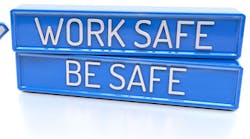4 steps to prevent employee injuries and illnesses in your dental practice
No one wants to get hurt on the job, or have to face a workers' compensation claim. How can you keep your dental office safe for everyone?
Chances are you became a dentist or dental professional to help others maintain and improve their oral health, not because you wanted to run a business. But dental offices are small businesses, and knowing how to foster a safe work environment is an important part of running a successful practice.
While dental practice employees may be exposed to some of the most common safety risks, such as potential slips, trips, and falls, they also face unique workplace hazards that could result in on-the-job injuries. For example, the use of dental tools such as explorers, probes, and drills exposes dentists, hygienists, and dental assistants to possible injury and disease through puncture wounds or hand-to-mouth contact. This is why creating a culture of safety in the workplace, combined with the appropriate workers’ compensation insurance, is critical to protecting the well-being of employees and your business.
According to the Occupational Safety and Health Administration (OSHA), developing a safety culture can significantly reduce workplace accidents. Not only do safety programs protect your most valuable asset—your employees—they can also result in considerable operational and cost savings by reducing workers’ compensation insurance claims.
RELATED ARTICLES:Resources for Dental Infection Control Awareness Month
The coordinator: The CDC has asked for infection prevention coordinators in all offices
How can your dental practice design and implement an effective safety plan? Here are four important steps:
• Pinpoint risks
The first step to a safe workplace is to identify and assess any existing or potential hazards. Actively analyze workers during the course of their day to observe where accidents could happen. Sharps injuries are among the most common in dental practices, as they put the injured worker at risk for exposure to bloodborne viruses such as hepatitis B, hepatitis C, and human immunodeficiency virus (HIV). Other potential injuries include musculoskeletal ailments, such as a strained back from standing or sitting over a patient for an extended period of time, inadvertent or excessive exposure to radiation from X-ray machines, as well as hand injuries such as carpal tunnel syndrome due to repetitive motions.
Look for more benign risks as well. Loose carpeting or wet spots on floors might cause employees to slip. Blind corners and swinging doors could also be potential hazards if they could lead to employees colliding with each other. Your workers’ compensation carrier can provide resources and guidance to help you identify other common risks in dental practices or specific to your work environment.
Once risks have been identified and documented, create formal policies and procedures to address them. At a minimum, include safety protocols in employee handbooks and training manuals. OSHA provides an excellent handbook that gives a comprehensive overview of how to create a safety and health program, as well as actionable steps and suggested solutions to common workplace risks.
• Lead by example
Effective workplace safety programs require the commitment of owners and managers to set the right tone and provide leadership. The best safety plans are more than rules posted on the wall or written in a handbook that's on a shelf. They are an integral part of the business culture. As a dentist and practice owner, you should clearly and frequently communicate the office’s safety rules and model the behaviors you want your employees to follow.
• Train and remind
The dental industry is projected to grow considerably over the next two decades as more people have access to dental insurance, and as aging Baby Boomers require more extensive oral care to remain healthy. As your practice grows, it’s important that all new employees, from the front desk to the back office, understand and adhere to your office’s safety practices and policies.
Make sure that safety procedures are part of each employee’s onboarding training schedule. Correct mistakes early so they don’t become engrained habits. Discuss office safety regularly at staff meetings, and involve your employees in making continuous improvements. Conduct annual safety training exercises that reinforce and fine tune areas of concern, assuring that potential hazards are identified and addressed before anyone gets hurt.
Some workers’ compensation insurance carriers provide training resources, payroll stuffers, and break room signage to remind your employees of your office’s safety policies and expectations.
• Safety first
Just as much as your patients deserve and expect high quality care when they come to your office, so do your employees deserve and expect a safe work environment. Creating a culture of workplace safety is one of the easiest and most cost-effective ways to contribute to the long-term success of your dental practice.







